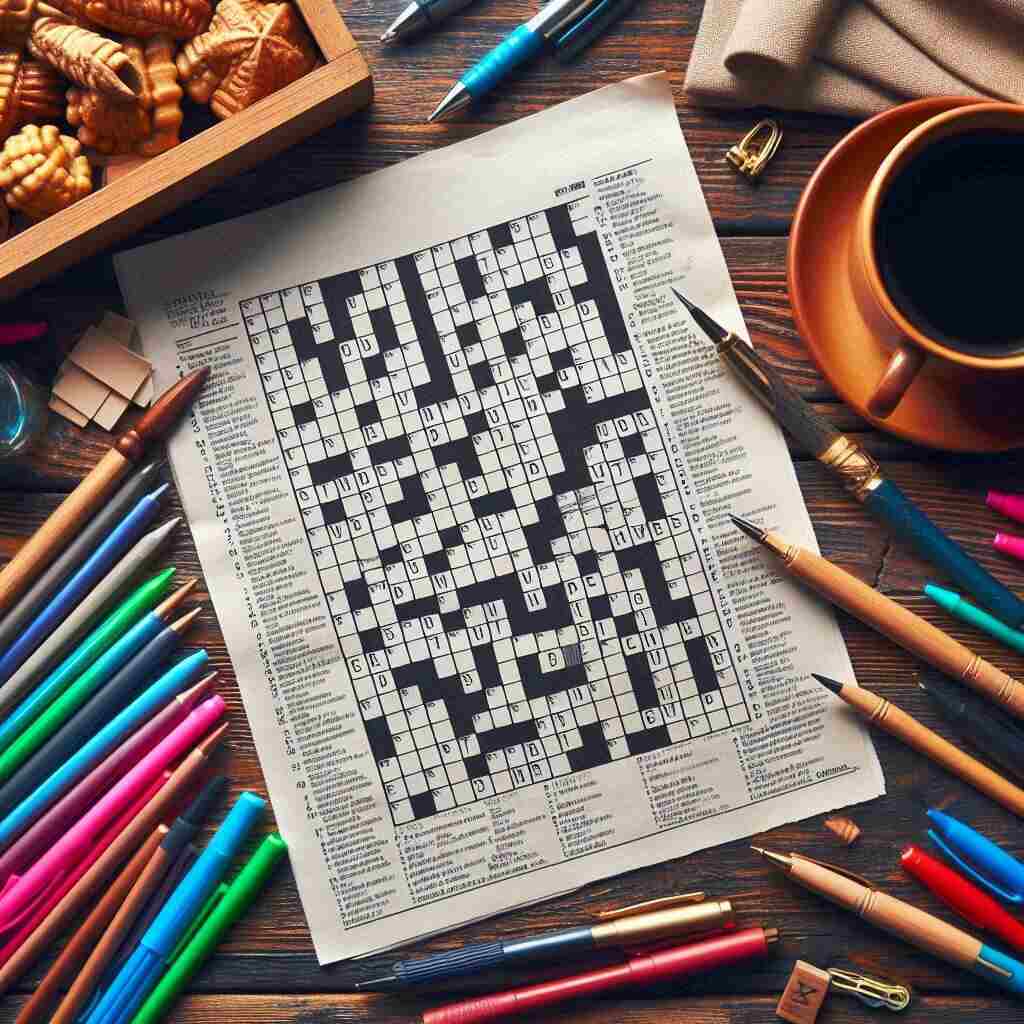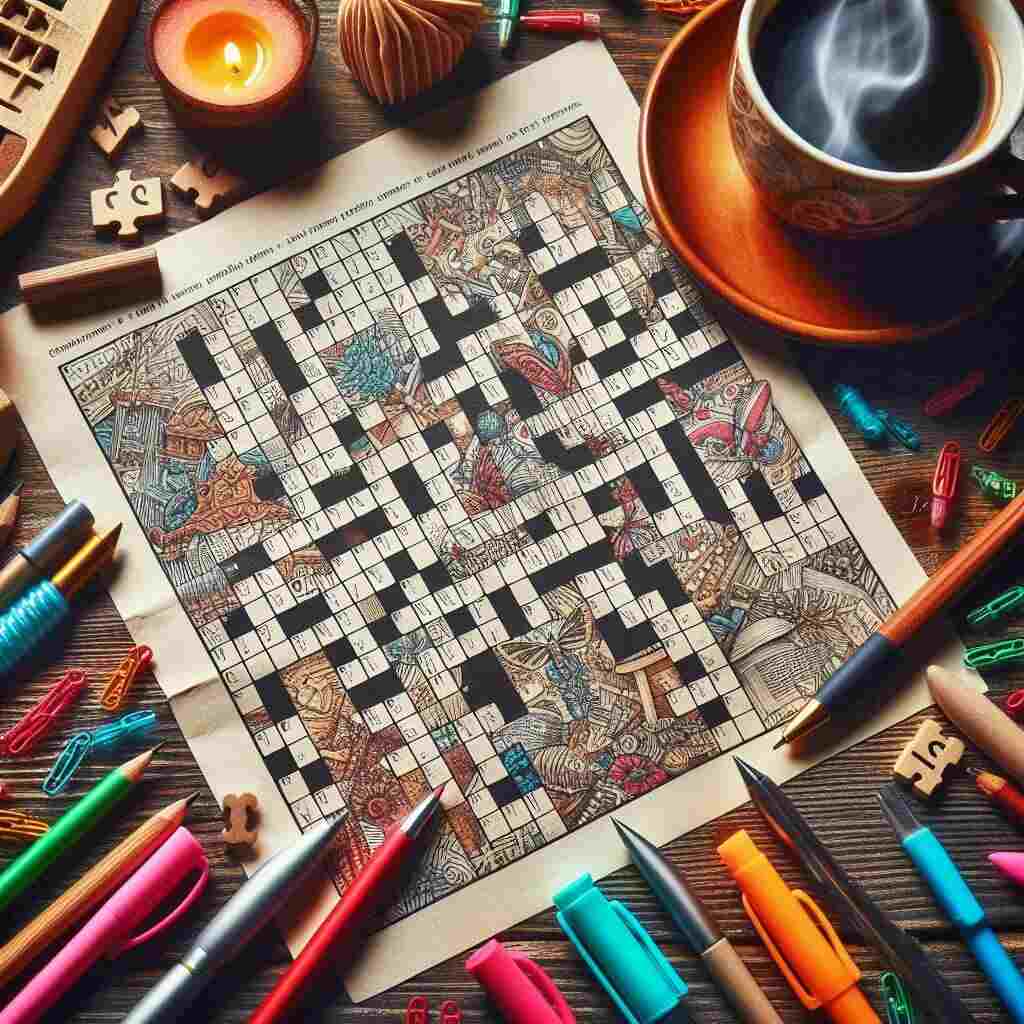Showing More False Bashfulness Crossword
Quick answer: the crossword fill
Why that answer fits the clue exactly
Short, direct: when a crossword clue reads “showing more false bashfulness”, the intended fill is almost always COYER (5 letters). That’s the comparative form of coy — literally “more coy,” and in crosswords “coy” commonly means a kind of affectation: a practiced or false bashfulness. The clue says “showing” (present participle sense) + “more” (comparative) + “false bashfulness” (definition). Put together: COYER.
Use this immediate-check approach whenever you see similar phrasing: identify the definition part of the clue, then spot grammatical signals (like “more” → comparative). If the grid entry length matches and crossings confirm, you’re done.

What the clue actually says (word-by-word reading)
Interpreting “showing”
“Showing” here signals the entry describes an outward behavior — it’s an adjective-like description (present participle sense). In everyday English you would say someone is “showing false bashfulness” — they are behaving coyly.
Interpreting “more”
“More” is the comparative marker. It tells you to expect a comparative form of an adjective: more X → often morphological comparative like -er or a multiword comparative (more X). For short adjectives like coy, English normally uses -er: coyer.
Interpreting “false bashfulness”
“False bashfulness” is the definition part. It matches coyness — the deliberate appearance of modesty or reluctance that is meant to attract attention or manipulate. When it’s “false,” the clue nudges the solver away from genuine shyness toward performative shyness — i.e., coy.
The canonical answer: COYER (explanation and form)

Spelling, enumeration, and variants
- COY — adjective meaning shy, modest, or artfully reserved.
- COYER — comparative: more coy. Five letters; a perfect fit when the clue explicitly uses the comparator “more.”
- Variant: MORE COY (two words). Setters prefer COYER when the grid needs a single word. When enumeration is given as (4,3) or similar, more coy might be accepted.
When setters prefer “coyer” vs “more coy”
- If the grid has a single five-letter slot, COYER is natural.
- Some setters avoid irregular comparatives for style or rhythm and will clue MORE COY only if grid pattern/length demands two words.
- In cryptic settings, you may also see COY clued with wordplay rather than a straight definition.
Etymology and usage of ‘coy’ and ‘coyer’

From quiet to coquettish: a quick history
Coy historically traces back to senses of “quiet” and “reserved.” Over time it grew the modern connotation of a deliberate modesty — often with flirtatious or affected intent. The comparative coyer is simply the grammatical comparative of coy, used when you want to say someone is “more coy” than someone else.
In crossword land, coy frequently appears because it’s short, crossable, and carries a clear, puzzle-friendly meaning that setters can manipulate with descriptors like false, affected, artful, or sham.
Synonyms and distractors in puzzles
Shyer, demurer, artful, affected
Possible synonyms that can appear as answers or distractors include:
- SHYER / SHIER — genuine shy (often a trap because “false” in the clue argues against genuine shyness).
- DEMURER — comparative of demure (less common morphological form).
- AFFECTED — suggests artificiality but can fit different letter counts.
- ARTFUL — implies craftiness, not necessarily bashfulness.
Why those often appear as wrong choices
Puzzle designers exploit subtle shades of meaning. “Shy” implies genuine discomfort; “coy” implies deliberate performance. If the clue includes the word false or affected, coy is likelier than shy. Pay attention to that nuance and don’t reflexively pick the first synonymous word that pops into your head.
Crossword clue mechanics: signals and indicators
Comparative forms and how clues show them
Words like more, less, comparative, or phrasing such as to a greater degree are signaling devices pointing to comparative forms: -er endings (coyer, quieter) or multiword comparatives (more playful). Always map the grid length to whether a morphological comparative or a two-word comparative fits.
“False” as a meaning modifier vs a wordplay flag
- As a meaning modifier, “false” narrows definition to affected or sham behaviors (false modesty → coyness).
- As a cryptic indicator, the word “false” can be an operator (e.g., anagram indicator, reversal) in cryptic crosswords. In straight definition clues like “showing more false bashfulness,” “false” is definitional, not a cryptic operator.
Setters rely on this dual use, so be alert: in cryptics, position and surface reading matter.
Step-by-step solving strategy for this clue
Use pattern + cross letters
- Read the whole clue for the definition first: “false bashfulness” → coy.
- Spot grammatical signals: “more” → comparative. Expect -ER or more X.
- Check enumeration (if provided) or grid slot length. If five letters, COYER fits.
- Confirm with crossing letters. If you have pattern
_ O Y E RorC O Y E Rfrom crosses, you’ve got it.
Context from surrounding themers and clues
Sometimes the theme or crossing answers will force a particular variant or spelling. If the grid already contains unusual letter combinations (Q without U, etc.), cross-check. If you’re unsure between COYER and SHYER, confirm with crosses like a rare letter that only one fits.
Example clue breakouts (with full parsing)
Example 1: straightforward puzzle
Clue: Showing more false bashfulness (5)
Parsing: Definition → false bashfulness = coyness → comparative adjective = COYER. “Showing” is the grammatical surface to make entry adjectival.
Example 2: cryptic-style variant
Clue: More reserved, putting on an act (5)
Parsing: Definition might be putting on an act (affectedness) with more reserved nudging comparative of reserved → COYER. The surface suggests acting; the definition may flip depending on setter intent.
Practice mini-puzzle (5 clues) with answers
Use this short set to practice the logic and see COYER in company.
- Showing more false bashfulness (5) → COYER
- More quiet; less noisy (6) → QUIETER
- Pretend modesty, briefly (3) → COY
- Not genuine: artful or ____ (8) → AFFECTED
- Comparative of shy (5) → SHIER or SHYER (grid will decide)
Walkthrough of the “showing more false bashfulness” clue in the mini-grid
- Start with (1): you see (3) is COY, confirming the base. (2) QUIETER confirms comparative pattern with -ER. Now (1) must follow the same comparative morphology → COYER. If crosses for letters 2–4 are QUI and AFE from other answers, they will either confirm or reject COYER. Cross-check and lock it in.
Setter tricks and how to avoid traps
Red herrings and surface reading
Puzzle surfaces are deliberately conversational to mislead. A phrase like “showing more false bashfulness” has a natural-language ring; don’t get seduced by the surface into overthinking. Identify definition and grammar signals, then apply crossings.
Common traps:
- Choosing SHYER when the clue says false → wrong shade.
- Mistaking false for cryptic instruction (anagram) in a non-cryptic puzzle.
- Ignoring grid length and forcing a two-word answer.
Writing about crossword clues (SEO tips for bloggers)
Keywords, meta, and structure for “crossword answer” posts
If you maintain a crossword help blog or answer site, optimize for searchers with problems like “showing more false bashfulness crossword answer” by following this structure:
- Title (H1): include the exact phrase users search for. Example: Showing More False Bashfulness Crossword — Answer & Explanation
- Early answer: put the one-line answer within the first 50–100 words (exact-match phrase plus answer).
- Headings and variations (H2/H3): break down quick answer, alternate fills, parsing, examples, and practice clues.
- Schema and FAQ: add FAQ markup with the 10 most common variations (people search for cryptic vs quick crosswords).
- Meta description: succinctly include the answer and intent. Example: Answer: COYER — Explanation, examples, and solving tips for the clue “showing more false bashfulness.”
Example meta title and description
- Meta title: Showing More False Bashfulness Crossword Answer — COYER (Explained)
- Meta description: Need the answer to “showing more false bashfulness”? The 5-letter fill is COYER. Read the full explanation, synonyms, and practice clues.
When the answer isn’t “coyer”: plausible alternatives and when they occur
There are contexts where COYER won’t be the fill even if the surface suggests it:
- Grid length mismatch — if the slot is (4,3) you might see MORE COY.
- Crossing constraints — crosses force a different comparative or synonym like SHIER/SHYER.
- Regional or stylistic preferences — some editors avoid archaic or less-common comparatives; they might prefer MORE COVERT (if the clue leans toward hiddenness rather than flirtation). Always let crosses decide.
Advanced: cryptic clue variants and how “false bashfulness” can be clued
Cryptic setters can split the clue into definition and wordplay in many clever ways:
- Definition = false bashfulness; Wordplay = comparative indicator (“more”) applied to a base word assembled from other clue parts.
- “False” could be anagram indicator in cryptic settings, but only if the surface supports it. E.g., “Showing more (anagram) bashfulness” could be rearranging letters that yield an adjective. That’s a setter’s playground and why cryptics are cautious with the placement of words.
Read cryptic clues with a two-track mind: (1) literal/definition, (2) wordplay. Try both tracks simultaneously.
Conclusion
Short definition, full payoff: the best answer to the clue “showing more false bashfulness” is COYER. The clue breaks neatly into grammatical signals and definition: “showing” suggests adjectival use, “more” signals a comparative, and “false bashfulness” defines the performative nature of coy. Use cross-letter confirmation and shade-of-meaning checks (false vs genuine) to avoid traps. Understanding these small linguistic cues makes solving faster and more reliable.
FAQs
Q1: What is the single-word answer to “showing more false bashfulness (5)”?
A1: COYER.
Q2: Could the clue be answered as “more coy” instead of “coyer”?
A2: Yes, if the grid uses two words or enumeration indicates a two-word answer (e.g., 4,3), MORE COY is possible, but single-word COYER is the usual fill for a 5-letter slot.
Q3: Is “coyer” American English or British English?
A3: Coyer is standard English and acceptable in both American and British usage; the comparative is grammatical either way, though some writers prefer “more coy” in formal prose.
Q4: Why does the clue include the word “false”?
A4: “False” narrows meaning to performative modesty (affectation), which points to coy rather than genuine shyness. In cryptics, “false” can also be a wordplay indicator, but here it’s definitional.
Q5: What common mistakes do solvers make with this clue?
A5: Choosing SHYER/SHIER (genuine shyness) instead of COYER (affected shyness), or miscounting grid letters and forcing a non-fitting word.
Q6: How do crossings help confirm COYER?
A6: Crosses provide letters that eliminate alternatives. If crosses produce C _ Y E R or _ O Y E R, that confirms COYER; mismatched crosses indicate a different fill.
Q7: Can “false bashfulness” be clued as “affectation” instead?
A7: Yes — setters often use synonyms like affectation, artifice, or sham modesty to clue the same concept, depending on enumeration and style.
Q8: Is “coquettish” related to “coy”?
A8: They’re related in sense: coquettish is flirtatiously coy, but it’s longer and used differently in grids. The direct comparative of coquettish would be more coquettish, not coyer.
Q9: How should I write a blog post about this crossword clue for SEO?
A9: Use an exact-match title and early short answer, then break down parsing, synonyms, practice clues, and examples. Include structured FAQs and meta tags for increased visibility.
Q10: When solving quickly, what three-step check should I use for a clue like this?
A10: (1) Identify the definition (look for the shade: false vs genuine), (2) spot grammar signals like “more” (comparative), (3) confirm with crossings and match enumeration.







